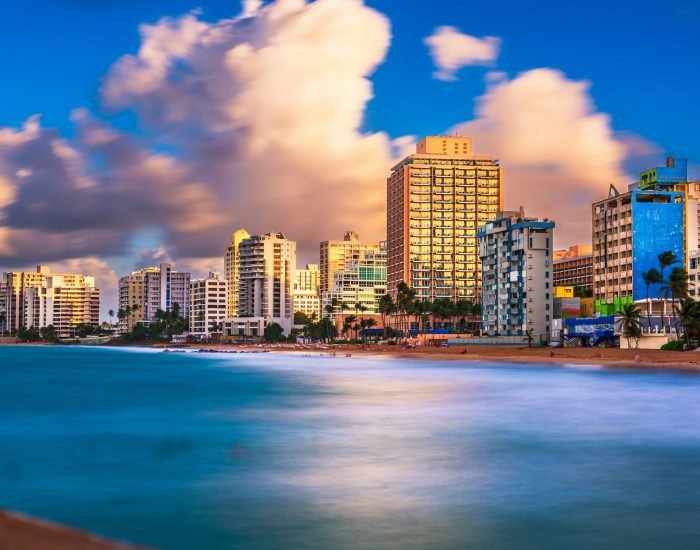The best time to visit Santo Domingo is from November to March, during the cooler and drier season, when temperatures range from 24°C to 29°C, making it ideal for sightseeing and outdoor activities. These months also coincide with many festivals and cultural events. The rainy season, from May to October, brings higher humidity and frequent afternoon showers, but it is also less crowded and more budget-friendly. Hurricanes are possible between August and October, but Santo Domingo is typically less affected than coastal areas.
Public transportation in Santo Domingo includes buses, “guaguas” (shared minibuses), and the metro system, which is modern, affordable, and covers key parts of the city. Taxis and ride-sharing apps like Uber are widely available and recommended for tourists, as they provide a safer and more convenient alternative to public transport. Walking is the best way to explore the Zona Colonial, while car rentals are ideal for venturing outside the city.
Zona Colonial is the heart of Santo Domingo’s historical and cultural attractions, featuring cobblestone streets, centuries-old churches, and charming squares. Gazcue is one of the city’s oldest residential areas, known for its quiet, tree-lined streets and beautiful homes. Piantini and Naco are modern, upscale neighborhoods offering trendy restaurants, shopping malls, and nightlife. Malecón, the waterfront boulevard, provides scenic views and is a great place to relax with locals.
Zona Colonial is home to some of the city’s most iconic landmarks, including the Alcázar de Colón, the former residence of Christopher Columbus’s son, and the Catedral Primada de América, the oldest cathedral in the New World. The National Pantheon, a former Jesuit church, now houses the remains of Dominican heroes. Don’t miss the Faro a Colón, a colossal lighthouse monument dedicated to Christopher Columbus, and the Museo de las Casas Reales, which offers a glimpse into colonial-era life.
Santo Domingo’s food scene is a blend of traditional Dominican dishes and international influences. Must-try dishes include sancocho (hearty meat stew), mangu (mashed plantains), and la bandera (the Dominican “flag” dish, consisting of rice, beans, and meat). For seafood, head to restaurants along the Malecón, where you can enjoy fresh fish with a view. Local drinks include Presidente beer, mamajuana (a unique blend of rum, red wine, and honey soaked with herbs), and fresh tropical fruit juices.
Santo Domingo is a cultural hub, with events like Carnival in February, featuring parades, music, and colorful costumes. The city’s vibrant music scene includes merengue and bachata, two genres that originated in the Dominican Republic. Visit the Teatro Nacional for performances of ballet, theater, and concerts. Museums such as the Museo del Hombre Dominicano offer insights into the country’s pre-Columbian history, while the Palacio de Bellas Artes is a center for visual and performing arts.
The Mercado Modelo in the Zona Colonial is the best place for souvenirs, offering everything from local crafts and jewelry to cigars and coffee. For high-end shopping, head to Blue Mall or Ágora Mall in the Piantini district, where you’ll find international brands alongside Dominican designers. Local markets, such as the Mercadito de la Duarte, are perfect for finding unique handmade goods and Dominican specialties like amber jewelry and larimar stones.
Santo Domingo’s nightlife is as diverse as its culture, with something for everyone. In the Zona Colonial, rooftop bars and lounges offer cocktails with a view, while Malecón is home to lively clubs and casinos. For live music and dancing, head to the Piantini district, where you can experience the best of merengue and bachata. If you’re looking for a more laid-back evening, enjoy a drink at one of the city’s many outdoor cafés or rum bars.
Santo Domingo is a great base for day trips to explore the Dominican Republic’s natural beauty. Just an hour away, you’ll find Boca Chica and Juan Dolio, two popular beach destinations with white sands and crystal-clear waters. For a more adventurous excursion, visit Los Tres Ojos, a series of underground lakes located in a natural limestone cave system. Another option is a trip to the nearby town of Altos de Chavón, a replica of a 16th-century Mediterranean village perched above the Chavón River, offering stunning views and cultural events.
Santo Domingo is a large and busy city, so be mindful of your surroundings, especially in crowded areas. The local currency is the Dominican Peso (DOP), though US Dollars are widely accepted in tourist areas. Spanish is the official language, but English is spoken in many tourist spots. The city can be hot and humid, so dress in light, comfortable clothing and always stay hydrated. Tap water is not safe to drink, so stick to bottled water. Finally, it’s a good idea to negotiate taxi fares in advance, as meters are not commonly used.








